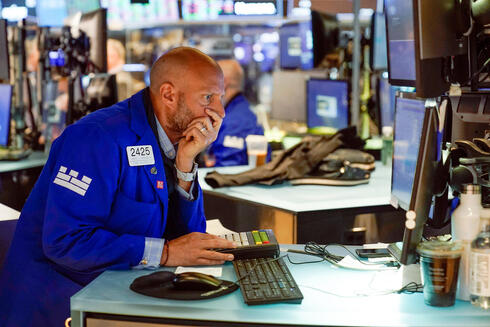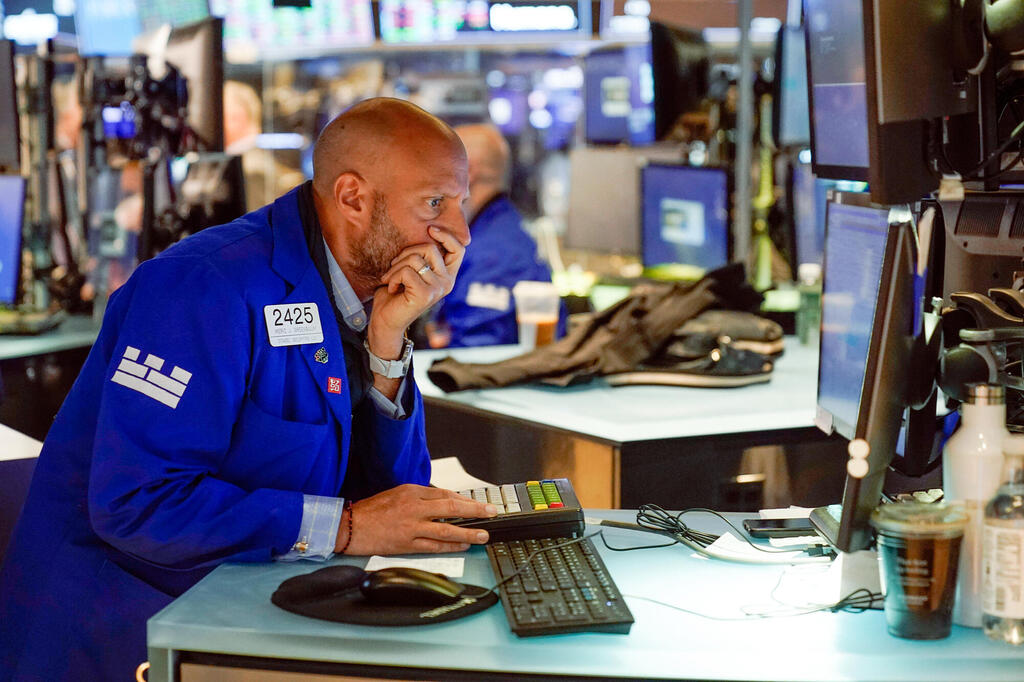
Analysis
2022 crisis has a long way to go until it reaches 2008 levels
There is a sense of the perfect storm brewing this week with the publication of important macro data, including the rate of inflation in the U.S., and the beginning of the financial report season that will reveal the real state of the economy and consumer mood
It’s a fateful week for global capital markets. Or perhaps we should say: another fateful week? Once again there is a sense of the perfect storm brewing with the publication of important macro data, including the rate of inflation in the U.S., and the beginning of the financial report season that will reveal the real state of the economy and consumer mood. In the background, there is renewed escalation in the war between Russia and Ukraine, which seems to set the world back half a year to when it just began and is adding another dose of uncertainty.
Oil prices are soaring after OPEC’s decision to cut production, pushing the price of fuel in the U.S. above the psychological threshold of $4 per gallon. Along with fuel prices, inflation in the U.S. is exploding and challenging Jerome Powell, the head of the Fed, in dealing with the rapid increase in prices.
In France, people are already standing in line at gas stations and those who have at least half a tank are being kicked out. The price of oil dropped slightly at the end of the week, but it is once again up to $100 a barrel, as it was at the beginning of the Russian invasion of Ukraine. Britain is facing economic chaos of its own with a crisis in pension funds and the dramatic withdrawal from the economic plan initiated by the new Prime Minister, Liz Truss. In the Eurozone, the rate of inflation reached 10% and only a week ago there was fear of a "Lehman Brothers moment" hovering over the European banking system against the backdrop of the Credit Suisse crisis.
In such a reality, the only thing that is certain is that this week will be volatile and the information should be published towards the end of the week. Although the past week has been a difficult one for investors, it was actually the first positive week of the last four. The S&P 500 index went up by 1.5%, the Dow Jones recorded a similar increase and the Nasdaq added 0.7% in the weekly summary despite a sharp collapse on Friday.
Since the beginning of the year, the indices have been in a head-to-head battle with 2008. So far, the S&P 500 has lost 24% since the start of 2022, the Dow Jones has fallen 20% and the Nasdaq has plunged 33%. In comparison, in 2008 the indices recorded declines of 38%, 34% and 40% respectively, so there is still room for additional declines and it seems that the timing of the Nobel Prize being awarded to the chair of the Fed at the time, Ben Bernanke, and his partners for research on financial crises couldn’t be more ironic.
The hopes for the traditional rally at the end of the year seem faint after the last few weeks, as realization seeps in that there is almost no positive scenario in sight. If the macro data continues to be optimistic, as was the case for example, with the American employment report published last Friday, which showed that the unemployment rate dropped to 3.5%, then this means there will be a continuation of the increases in interest rates by the Fed and subsequently by the central banks of the world. Alternatively, if the macro data will begin to show signs of weakness, it means that the Fed has "strangled" the American economy with overly aggressive interest rates and they are on the road to a recession. In either scenario, there is nowhere to draw optimism because even if the direction starts to become more clear, the end of the current wave is nowhere in sight. This coming Thursday, the index that has become the most important one over the last year - the U.S. consumer price index - will be published. It is expected to decrease for the second month in a row and indicate an inflation rate of "only" 8.1% in September compared to 8.3% in August.
At this point, most economists expect a fourth consecutive 0.75% increase in interest rates in November, a rate that has become a kind of ‘new normal’. However, this increase has happened very rarely in the history of central banks that usually raise the interest rate in more moderate increments of 0.5%-0.25%. If last summer there were still expectations that at the beginning of 2023 the Fed would start to act in the opposite direction and lower interest rates after controlling inflation, they were postponed to an unknown date.
This is actually one of the main issues in the markets today - investors are angry and disappointed with the Fed’s conduct after it missed the right moment to deal with inflation that returned after a 20-year coma. The main disappointment and frustration is, of course, felt mostly among young investors who put their money in the stock market during Covid, recorded quick profits and were mistaken in thinking that they became great investment strategists overnight. In practice, they discovered that the central bank managed their investment portfolio with zero interest rates and incessant liquidity flows. They are realizing they were just extras in a game that is now over.
The escape by young investors together with the rapid increase in interest rates created serious damage to technology stocks, as is clearly evident in the sharp decline suffered by the Nasdaq. However, currently the widespread opinion is that declines are not over in light of what is expected to be publicized in the financial reports this week.
Several companies, led by AMD, have already issued profit warnings that have brought shares down, but the real fear is of a sharper lowering of forecasts for 2023 that will accompany the publication of the reports for the third quarter. The only companies that show any type of promise are likely to be cyber and oil companies.
Analysts on Wall Street have already made adjustments to their S&P 500 forecasts, reducing them by an average of 7% for the third quarter. This is the sharpest rate since the second quarter of 2020 when Covid lockdowns began, but this is probably only the beginning.
For many investors, forecasts for growth of about 8% in index companies are still too high and will have to undergo further adjustments. The first to publish financial reports this week will be a series of the largest banks in the world including Citi, J.P. Morgan and Morgan Stanley who will report on Friday, alongside them are several large companies whose performance will reflect the consumers’ mood in the U.S. and throughout the world such as Pepisco, Domino's Pizza and Delta Air Lines.
First published: 15:08, 11.10.22














